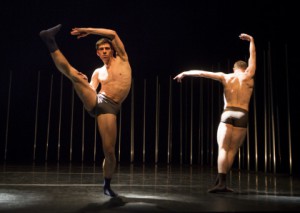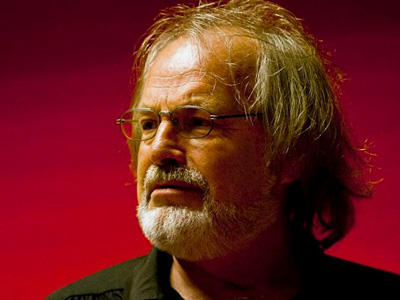By Sedgwick Clark
We last convened in this space in late October when I wrote in dismay about the exalted Berlin Philharmonic’s dismal showing under Simon Rattle at Carnegie Hall. I promised (rather optimistically, as it turns out) that I would report the following week on an orchestra at the top of its form.
That orchestra was New York’s own Philharmonic, with Music Director Alan Gilbert continuing his cycle of Carl Nielsen’s six symphonies and three concertos in celebration of the Danish composer’s 150th birthday year. The brilliantly played overture to his opera Maskarade had all the sparkling humor of a perfect curtain raiser, and the performances of the Fifth and Sixth symphonies surpassed any I had heard in concert.
Differing opinions are my lifeblood, but I can’t stand the knee-jerk oohing and aahing over chichi international artists on an off night, especially after hearing our own local orchestra knock the socks off the distinguished visitors the next day. Exiting Carnegie after the BPO’s second Schumann symphony concert a few days later, one of my colleagues sighed, “Why can’t our home team play like that?” I replied, to my friend’s astonishment, “I’ll take the New York Philharmonic any day,” and another friend overhearing us immediately agreed with me.
Now both Rattle and Gilbert are in the news. The former announced over a year ago that he would be leaving Berlin at the end of his contract in 2018; two weeks ago, Gilbert announced that he would not renew his contract in 2017. Rattle was in London last week, leading the Berliners in all seven Sibelius symphonies and the Mahler “Resurrection” to mixed reviews. He is reportedly a shoo-in to succeed Gergiev at the LSO. Not long after Gilbert’s Nielsen concert in New York, he guest conducted the BPO in Mendelssohn’s “Scottish” and the Berlin premiere of the Danish composer’s Third (“Sinfonia espansiva”)—amazingly, 104 years after its first performance.
The first thing to say is that the New York Philharmonic under Alan Gilbert is in great shape, capable of excellent performances of music from all eras no matter who is on the podium. Individual concerts during Gilbert’s tenure that leap to mind include semi-staged performances of Ligeti’s Le Grande macabre and Janácek’s The Cunning Little Vixen, with which he respectively ended his first two seasons, and his Nielsen cycle just completed. I have no doubt that there will be many more successes before he departs.
The music directors who preceded him, Kurt Masur and Lorin Maazel, bequeathed him an orchestra capable of first-class performances of the basic repertoire. However, neither of them was really interested in new music at a late stage of their careers. To Gilbert’s credit he brought genuine commitment to new works and imagination in the presentation of 20th-century works—the first music director since the Boulez years to do so.
Everyone pays lip service to new music: It’s necessary to enlarge the repertoire. An orchestra unfamiliar with new music is a stunted orchestra. But the committed audience for new music is small—especially among subscribers, most of whom tolerate it at best. This is not the time to experiment. Next season’s subscription series features a Rachmaninoff festival, the beloved Germano-Austrian classics, Holst’s Planets, Vivaldi’s Four Seasons, a Messiaen week, and a pitiful three world premieres. The Philharmonic is about to rehab Avery Fisher Hall—and I mean gut it, not just give it the umpteenth acoustical renovation. The only thing that will remain as we know it will be the outer skeleton of the hall, which is surprising because a Frank Gehry hall should be just what Lincoln Center’s revisionist administration would die for. Think of the tourist traffic. The hall will be renamed in honor of the highest bidder—maybe the other Koch brother. (Just kidding . . . I hope).
Of course, what the Philharmonic, its subscribers, and its administration would like is another Bernstein. And thus we get to the “I WANT” section of these musings. First off, the orchestra will want a music director with which it is already acquainted. We may be certain that the Times reviewers will put every conductor to the litmus test from now on. Already, in his February 7 news piece announcing Gilbert’s exit, reporter Michael Cooper posited a few. The closest answer is Gustavo Dudamel, but the Dude would be crazy to abandon the audience, administration, and critical adoration of his current Los Angeles post. What about that other desirable Angelino, Gustavo’s predecessor, Esa-Pekka Salonen? The Phil would love him, but E-P wants to compose, and he would lard the subscription season with contemporary music. David Robertson has led the orchestra more than any others today, but he is another whose taste runs to newer music than the Philharmonic might prefer; he was music director of Boulez’s Ensemble Intercontemporain and is an excellent conductor of that repertoire. Moreover, the players have been cool to him.
The Boston Symphony’s new conductor, Andris Nelsons? Rumor has it that Berlin is already interested, and anyway he’s not ready. Pablo Heras-Casado has led the Philharmonic only three times. Seattle Symphony’s Ludovic Morlot is definitely not ready. Yannick Nézet-Séguin just signed up for five more years in Philly, and they love him there, for good reason.
Riccardo Muti? No, for several reasons, and he has it made in Chicago. Daniel Barenboim, is a bad fit. And Simon Rattle, for reasons that should be obvious, no.
Coincidentally, this week, Christoph Eschenbach announced that he would be leaving Washington, D.C.’s, National Symphony to spend the rest of his career in Europe. For the reasons that all of his previous U.S. positions have been less than successful, he is out of the running. Besides, the Philharmonic already nixed him once.







MPhil Vague on Gergiev Hours
February 24th, 2015By ANDREW POWELL
Published: February 24, 2015
MUNICH — Fourteen months ago irate journalists confronted Valery Gergiev at a news conference here amid his preparations for a Stravinsky program with the Munich Philharmonic. The confrontation wasn’t over music, rather politics, but it did lead to questions for the orchestra’s management about his hours and pay, made more pertinent when the Stravinsky proved artistically hollow and the conductor’s rehearsing habits became better known in this city. Management demurred, until now, just ahead of the announcement of Gergiev’s first season (2015–16) as MPhil Chefdirigent.
— How many hours of rehearsal took place for the [Dec. 18, 2013] Stravinsky program? How many were with Gergiev?
MPhil: No answer.
— What does the MPhil normally expect of a guest conductor, in number of days with the musicians and number of rehearsals?
— What is expected of any MPhil Chefdirigent as regards: physical presence in Munich; number of weeks of concerts per year; rehearsals; behavior or ambassadorship, including guest conducting, while away from Munich?
MPhil: Valery Gergiev has in the past as guest conductor rehearsed to the same measure and extent as all chief and guest conductors of recent years. At this unchanged intensity will he rehearse in his role as Chefdirigent from September 2015. [The number of weeks of concerts will not be detailed until the 2015–16 announcement] but will be in the same measure as for all other chief conductors. This applies to both Munich and tour concerts.
We have talked with him about the currently practiced quantitative framework (das bisher praktizierte Mengengerüst), a basis that ensures that he and the orchestra can collaborate artistically at the highest level.
Despite the Russian conductor’s future status as a City of Munich employee, the city-run Munich Philharmonic has refused to disclose the value of his contract, which runs as far ahead as August 2020. Says the MPhil, apparently overlooking their different status, “all guest conductors and soloists are treated exactly the same way,” i.e. with remuneration kept confidential. The contrast with the U.S. could not be starker: while Riccardo Muti’s mostly privately funded pay in Chicago, as example, is publicly stated, Gergiev’s earnings, paid essentially from public funds, are private.
Photo © Alexander Shapunov
Related posts:
Maestro, 62, Outruns Players
Jansons! Petrenko! Gergiev!
Voix and Cav
Gergiev, Munich’s Mistake
Gergiev Undissuaded
Tags: Commentary, München, Münchner Philharmoniker, Munich, Munich Philharmonic, Valery Gergiev
Posted in Munich Times | Comments Closed